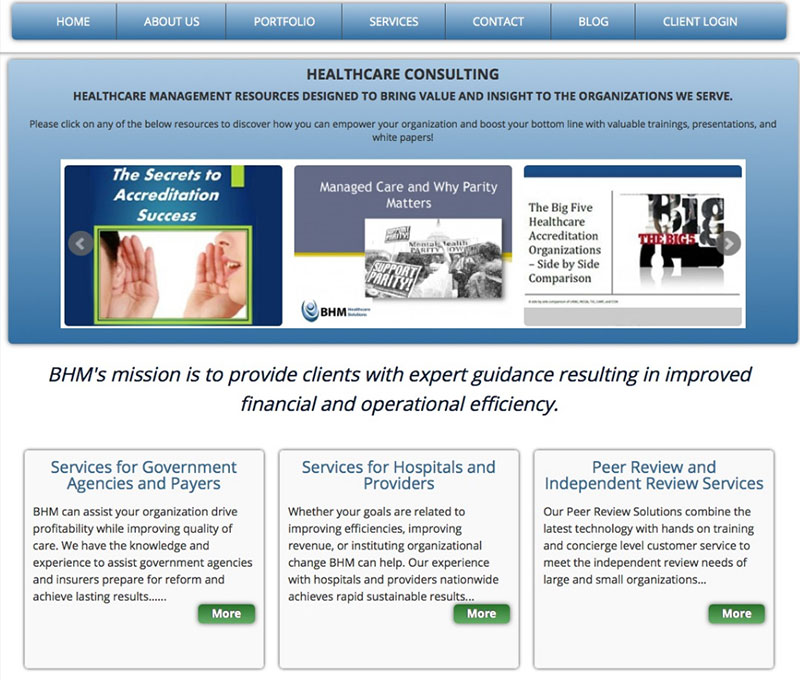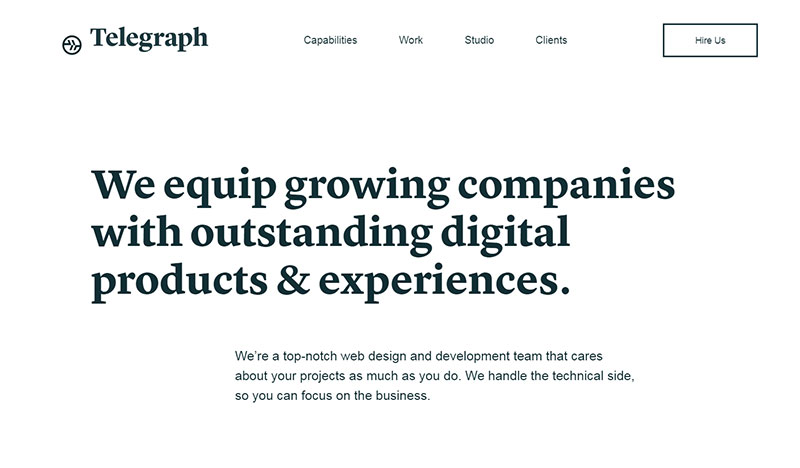Browsing the Internet enables one to find all sorts of information, from commercial to informational, and everything in between, in an instant. Further, the total number of websites on the World Wide Web is difficult to approximate, but estimations say that there are more than 1 billion active websites, and the number is expected to double in the coming years. Amid so many websites all competing for users’ attention, how do you make yours stand out? The answer, for any website out there, lies in the homepage design.
All websites have a homepage, which is the page that welcomes users to the site. Without a well-designed homepage, people are likely to exit the site quickly without interacting with it in any way. This is why anyone who owns a website should pay the utmost attention to homepage design and to all the elements that make it truly welcoming. This article created by our team at Amelia (the WordPress booking plugin) is here to help. Continue reading how to design a homepage correctly by learning which mistakes to avoid right from the start.
The most common homepage design mistakes
You don’t state what you are doing in a clear manner
Homepages are meant to be a virtual door that allows users to take a peek at what is inside. Through careful messaging, you need to ensure your homepage includes a bold statement to help people quickly understand what your website is all about. Does your current homepage tell users enough about what you do or what are you trying to present, all of which can be understood at a glance?If not, it’s time to re-evaluate your messaging. When coming up with a new, easily-understood welcome message, be sure to take into account your target audience, your field of interest, and the overall purpose of your website.
Your homepage is chaotic

Homepage design should strike a reasonable balance between too much information and too little information. Your website’s homepage will act as a lure for users, so you have to create a layout that stirs curiosity. Provide just enough information to make them curious, but not so much as to overwhelm them with everything they can find on the site. This way, you will encourage them to browse further. Organize the content carefully and keep it tidy. A cluttered homepage will not inspire faith in the rest of your website.
You didn’t include CTAs

It’s no secret that Internet users can be impatient, going from one website to another looking for exactly what they need. Spending a lot of time on one site just to find a contact button, for example, is not convenient. This is why you should include clearly visible Call-To-Action buttons in your homepage design, no matter what your website is about. The worst websites include zero clues to guide people when navigating. Through CTAs, you give people some direction, making the overall user experience more pleasurable.
Lead capture is overlooked
Users don’t normally purchase something a few seconds after they’ve accessed a site. Instead, they look around, assessing your homepage carefully before they make a decision to interact. Homepage design is thus a great tool for lead conversion and can be used to quickly win the user’s trust when done right. Enhance your users’ trust by promoting special offers such as discounts or free delivery on the first order placed. Even if you don’t make a sale or win the user’s business right there and then, you can always use your list of leads to entice your potential customers to come back and purchase later.
You don’t have an email sales funnel
Successful homepage designs often include a pop-up newsletter form to collect users’ emails. An email list can help you generate more business in the future with targeted marketing campaigns, and setting up an email sales funnel on the homepage of the site is not difficult. The form should simply ask users to type in their email address in return for something that you offer (a discount, freebies, free delivery, or similar). Get creative with this form. The more interesting it is, the higher the chance to make people leave their contact details. Once you have a sizable list, plan and create a sales funnel that you can use to entice users with future promotions as well as up-sells and cross-sells.
Hick’s Law is ignored
In homepage design, you should always take into account Hick’s Law. This law states that the more options a user has on a page, the more time they will spend analyzing each. That is especially true when designing a homepage. A good homepage will give the user enough options to allow them to make a choice that suits them best, but not too many options so as to prevent a decision from ever taking place.
Carousels instead of hero areas
Even though some designers consider that using carousels and sliders in their homepage design is a good idea, it isn’t always so. This is because carousels rotate content haphazardly instead of presenting it with careful intention. Instead, you should use hero areas that include the most important, curated information gathered in one single place. Make sure it is responsive and personalized for the best result.
Tabbed sections instead of scrolling

Using tabbed sections in homepage design is not the best approach. Why? People will focus on the upper side of the page and won’t bother to look for other bits of content that you include on it. People prefer scrolling when navigating on a site, so you may want to consider that when structuring your homepage. Tabbed sections may work in particular situations, though, when all the information you want to present won’t fit neatly on one page.
Content selection is inappropriate
Visuals are much more impactful than written content, especially on the homepage. Not using the appropriate visual content when designing your homepage can lead to confused or unsure visitors. Using a news feed as your homepage won’t do the job, either. You should only include well-curated content of great importance and relevance to attract the user’s attention and keep it active.
Using H1s improperly
H1s represent the headings of your homepage as they use the biggest font size. Using too many H1s might make the users distracted, which is not the result you desire. In homepage design, it’s important to keep a balance when structuring written content. Keep the H1s limited and containing less than 8 words, while making the rest of the content smaller in size. This will help users scan the website faster and find exactly which passages they are looking for.
Elements that all homepages should include
In order to come up with the best design for your homepage, you need to experiment with multiple layouts and see which one fits your (and your users’) needs the best. In homepage design, you need to take into account a lot of different aspects and incorporate them in a unique manner on your site. The elements that all homepages should include are:
A clear statement
Tell your visitors what your website’s purpose is and what actions they can engage in while they are on your site. Even though this is an essential step, some people tend to overlook it because they consider it irrelevant. In fact, this is the crucial element that makes the difference between a good homepage and a bad one.
Some links to social media accounts
If you want people to engage with your social media accounts, placing highly visible buttons on the homepage is a great idea. Don’t skip this step if you are planning to expand your social media community.
An intuitive navigation system
This is pretty self-explanatory. A good navigation system is the cornerstone of your whole website. Any first-time visitor will pay attention to both the looks of your homepage and how smoothly it runs. Invest the necessary amount of time into making it responsive.
Written content
Homepage design is not all about how it looks, but how the page is filled as well. A great visual layout will be in vain if the homepage is filled with gibberish. Make sure that your content is high-quality and relevant for the user.
Visuals
Last, but not least, use high-quality visuals. You can use professional photos, animations, videos, or anything that may suit your website’s niche. Remember to be selective so as not to clutter your homepage. Use just enough visuals to catch the attention of the users and intertwine these elements with well-worded written content for best results.
Wrapping it up
These were just a few of the mistakes that people make in homepage design. Many others may show up in the process, and it’s your job to determine what to do when bad design raises its ugly head. But if you stick with the principles of what to avoid listed in this article, then your homepage should already be better than millions of websites out there.
If you enjoyed reading this article about homepage design, you should check out this one on loading bar.
We also wrote about a few related subjects like login page, golden ratio in design, website critique and information architecture. But also an interesting piece with table plugin examples.











